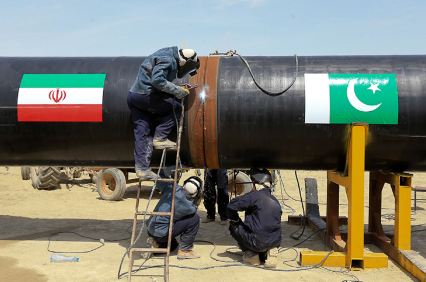The much-discussed Turkmenistan–Afghanistan–Pakistan–India (TAPI) gas pipeline project has once again resurfaced in the headlines after the Turkmen Ambassador in Islamabad met with Pakistani officials a few weeks ago . According to diplomatic sources, the envoy conveyed his country’s concern over the slow progress and urged Pakistan to expedite work on the long-delayed project. Turkmenistan, which possesses the world’s fourth-largest natural gas reserves, views TAPI as a strategic lifeline for its energy exports. However, despite years of talks, groundbreaking ceremonies, and international pledges, the project remains stalled.
At its core, the TAPI project was envisioned as a game-changer for regional energy cooperation. Spanning nearly 1,800 kilometers, the pipeline is designed to carry 33 billion cubic meters (bcm) of natural gas annually from Turkmenistan’s Galkynysh field, through Afghanistan and Pakistan, all the way to India. For energy-hungry countries like Pakistan and India, it promises much-needed relief from chronic shortages, while for Turkmenistan it offers diversification away from its dependence on exports to China.
Yet, optimism about TAPI has repeatedly clashed with ground realities. As we have pointed out earlier, the project faces three major obstacles.
First is the issue of India’s participation. India remains an official partner, but its tense political and strategic relations with Pakistan make the arrangement highly complicated. Any pipeline running through Pakistani territory to supply Indian markets is fraught with mistrust. Pakistan has serious reservations about allowing such a dependency, while India is equally hesitant about relying on a transit route through its rival. Many analysts believe that as long as India remains part of the consortium, the TAPI project will struggle to materialize. Despite this, Turkmenistan is not ready to exclude India, fearing that without such a large consumer market, the economics of the project would collapse.
Second are the financial hurdles. The cost of the pipeline is estimated to be over $10 billion. Mobilizing such funding in an environment of geopolitical tensions and weak investor confidence has been extremely difficult. International lenders have shown little enthusiasm, largely because of security risks in Afghanistan and the uncertainty surrounding Pakistan-India relations. Without a credible financing model, the project cannot move beyond paper agreements and diplomatic promises.
Third is the security situation in Afghanistan. The pipeline is supposed to pass through some of Afghanistan’s most volatile regions. The country has remained unstable for decades, with little guarantee of sustained peace. The Taliban government has pledged support for TAPI, but instability, militancy, and lack of international recognition remain formidable barriers. Unless Afghanistan achieves a degree of lasting peace, it is unrealistic to expect a multi-billion-dollar pipeline to safely operate across its territory.
In principle, regional cooperation projects like TAPI could transform South and Central Asia, knitting together economies through shared interests. But for that to happen, three prerequisites must be addressed: genuine peace in Afghanistan, a sustainable financing framework, and a reconsideration of India’s role. Without these, the TAPI project is unlikely to see the light of day.
For now, despite Turkmenistan’s repeated appeals, the future of TAPI remains more uncertain than ever—an ambitious dream constrained by the harsh realities of geopolitics and economics.

















